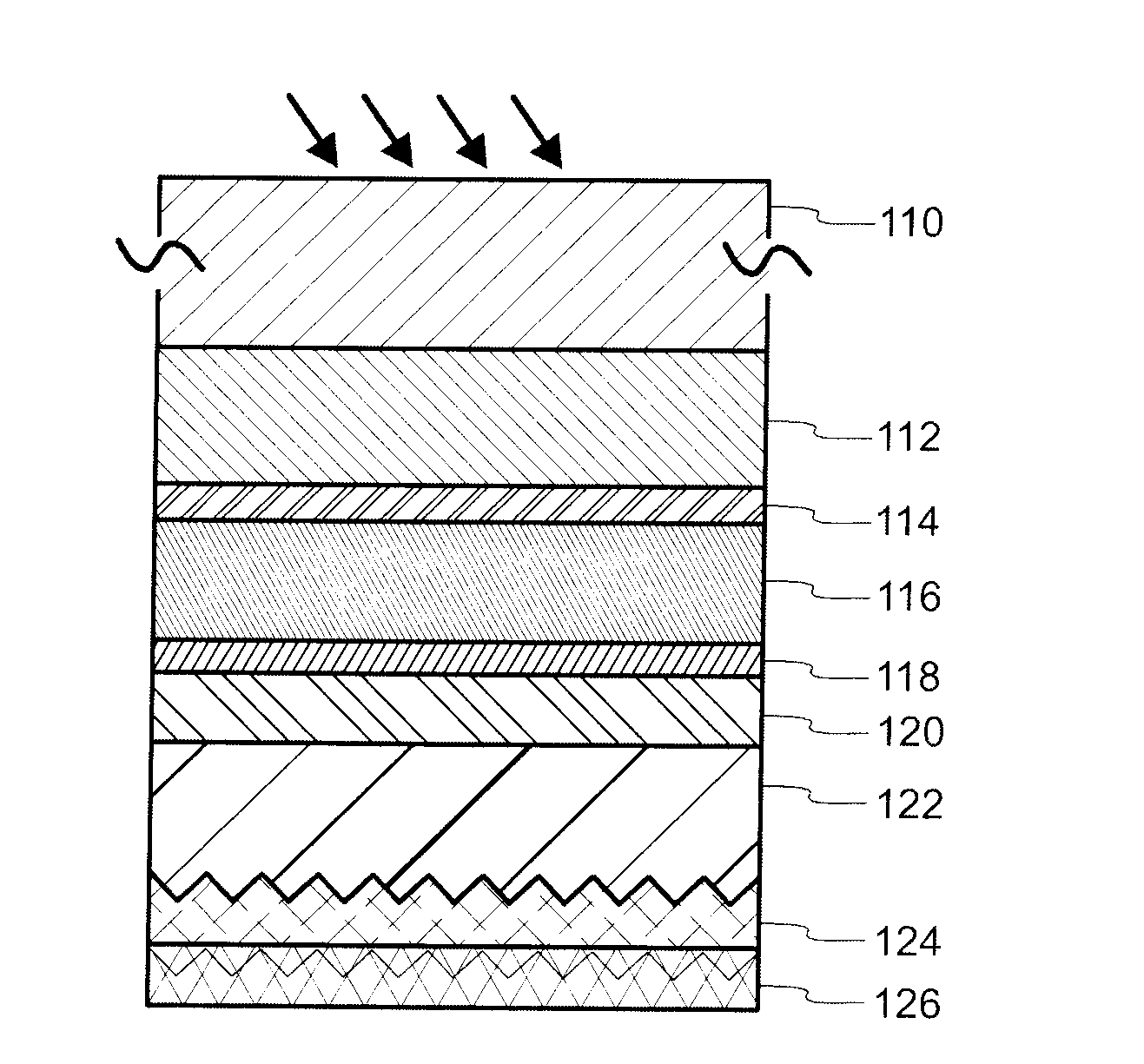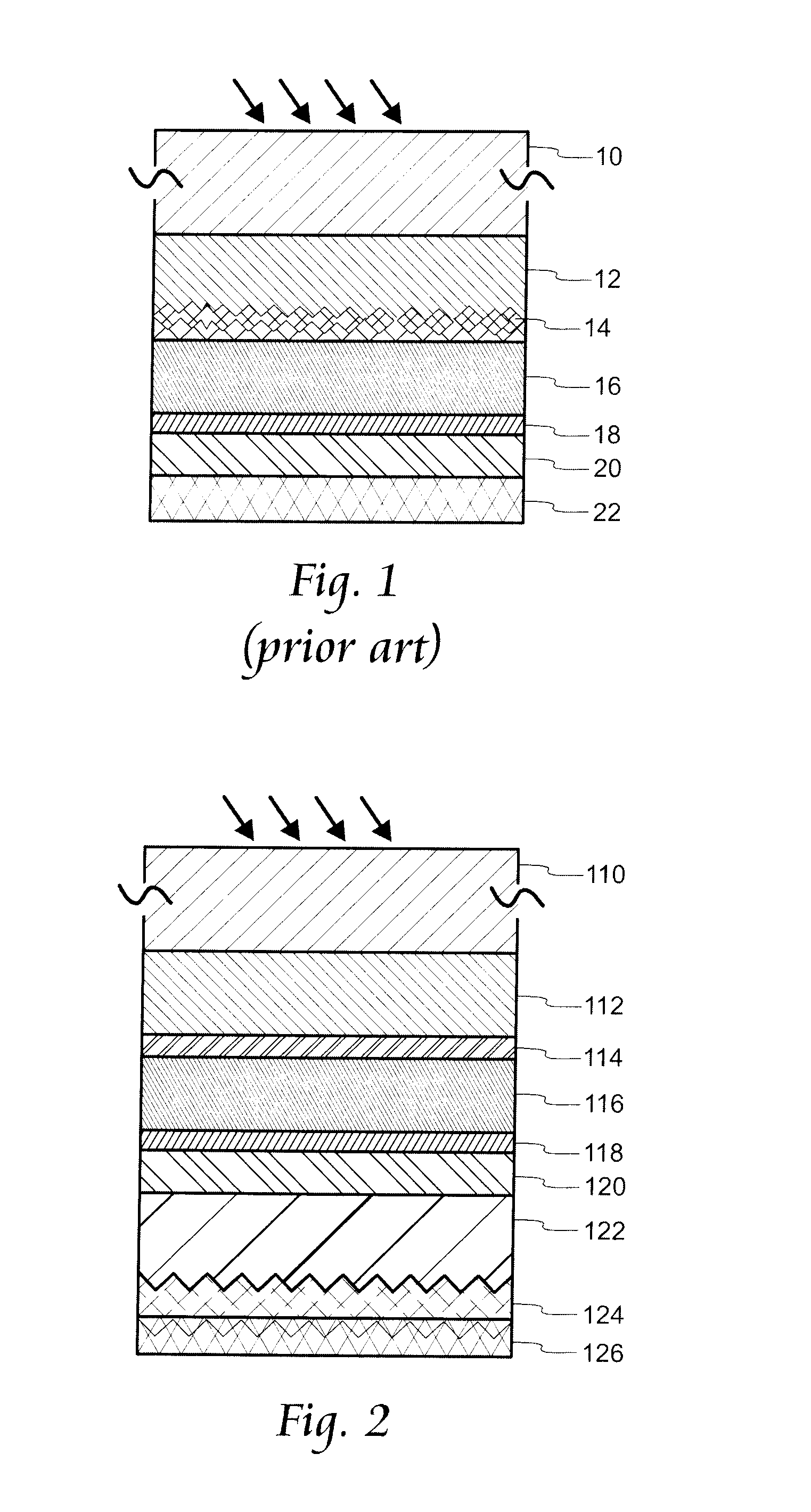Amorphous silicon photovoltaic cells having improved light trapping and electricity-generating method
a photovoltaic cell and amorphous silicon technology, applied in the direction of basic electric elements, electrical equipment, semiconductor devices, etc., can solve the problems of easy corrosion of silver, high cost of silicon thick layer,
- Summary
- Abstract
- Description
- Claims
- Application Information
AI Technical Summary
Benefits of technology
Problems solved by technology
Method used
Image
Examples
Embodiment Construction
[0012]Referring to FIG. 2, an amorphous silicon thin-film photovoltaic cell (hereinafter “cell”) consistent with an embodiment of the present invention is illustrated. The cell comprises multiple layers. These include a transparent superstrate 110, which may be glass or another transparent material. Next in the cell of FIG. 2 is a layer of a transparent conductor 112 such as SnO2 or ZnO. As noted above, in the prior art, this layer is often textured to scatter approximately 10 to 15% of the incoming light so that the light exits this layer into one or more p-i-n structures at a slightly different angle from the angle at which it entered. In this embodiment, the transparent conductor 112 is not textured, and instead has specular transmission properties with no more than minimal scattering of the incident light. (In this regard, “minimal scattering” means that substantially less than 10% of incoming light is scattered. Preferably, less than one percent of incoming light is scattered a...
PUM
 Login to View More
Login to View More Abstract
Description
Claims
Application Information
 Login to View More
Login to View More - R&D
- Intellectual Property
- Life Sciences
- Materials
- Tech Scout
- Unparalleled Data Quality
- Higher Quality Content
- 60% Fewer Hallucinations
Browse by: Latest US Patents, China's latest patents, Technical Efficacy Thesaurus, Application Domain, Technology Topic, Popular Technical Reports.
© 2025 PatSnap. All rights reserved.Legal|Privacy policy|Modern Slavery Act Transparency Statement|Sitemap|About US| Contact US: help@patsnap.com


